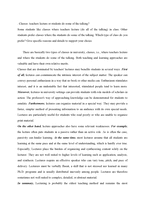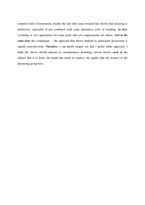영문 Classes teachers lecture or students do some of the talking영어작문
Some students like classes where teachers lecture (do all of the talking) in class. Other students prefer classes where the students do some of the talking. Which type of class do you prefer? Give specific reasons and details to support your choice.
There are basically two types of classes in university, classes, i.e., where teachers lecture and where the students do some of the talking. Both teaching and learning approaches are valuable and have their own relative merits.
Classes that are dominated by teachers lectures may benefits students in several ways. First of all, lectures can communicate the intrinsic interest of the subject matter. The speaker can convey personal enthusiasm in a way that no book or other media can. Enthusiasm stimulates interest, and it is an undeniable fact that interested, stimulated people tend to learn more. Moreover, lectures in university settings can provide students with role models of scholars in action. The professors way of approaching knowledge can be demonstrated for students to emulate. Furthermore, lectures can organize material in a special way. They may provide a faster, simpler method of presenting information to an audience with its own special needs. Lectures are particularly useful for students who read poorly or who are unable to organize print material.
On the other hand, lecture approaches also have some relevant weaknesses. For example, the lecture often puts students in a passive rather than an active role. As is often the case, passivity can hinder learning. At the same time, most lectures assume that all students are learning at the same pace and at the same level of understanding, which is hardly ever true. Especially, Lectures place the burden of organizing and synthesizing content solely on the lecturer. They are not well suited to higher levels of learning such as application, analysis, and synthesis. Lectures require an effective speaker who can vary tone, pitch, and pace of delivery. Lecturers must be verbally fluent, a skill that is not stressed nor learned in many Ph.D. programs and is usually distributed unevenly among people. Lectures are therefore sometimes not well suited to complex, detailed, or abstract material.
In summary, Lecturing is probably the oldest teaching method and remains the most common form of instruction, despite the fact that some research has shown that lecturing is ineffective, especially if not combined with some alternative style of teaching. In fact, Lecturing is very appropriate for some goals and very inappropriate for others. And at the same time, the counterpart the approach that allows students to participate discussions is equally non-universal. Therefore, I can hardly simply say that I prefer either approach. I think the choice should depend on circumstances including various factors such as the subject that is to learn, the depth that needs to explore, the quality that the lecturer or the discussing group have.





 분야
분야


